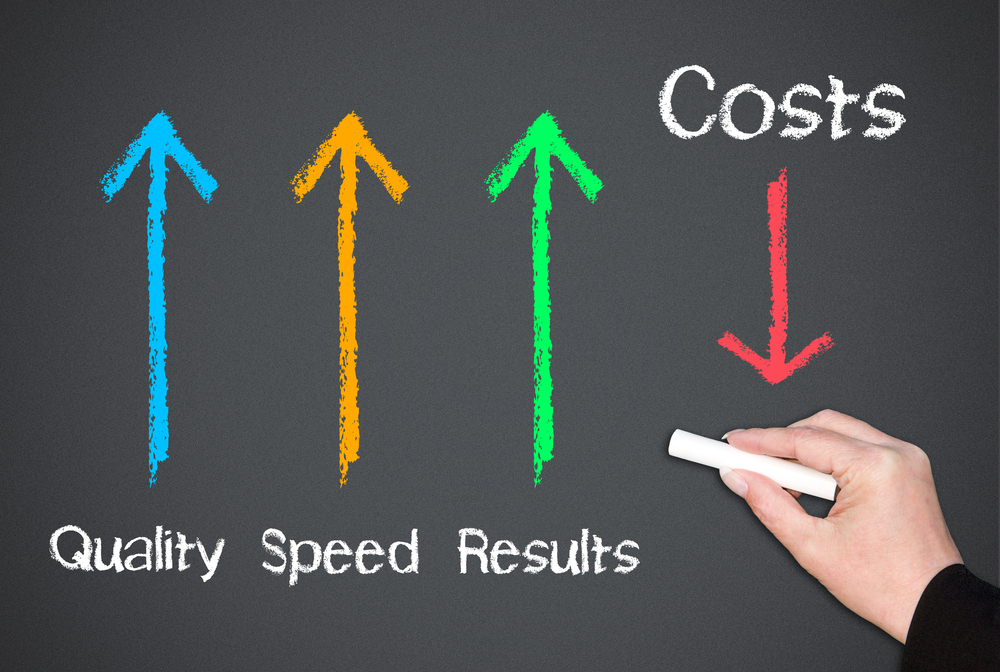Oil price volatility has brought in renewed scrutiny on ‘cost’ and what constitutes ‘optimal’.
Corporations in the GCC are now taking strategic decisions to navigate the new normal and the pressures that it puts on the health of their enterprises. They are now urgently starting to explore opportunities for optimising operational costs, enhancing revenues, driving supplier costs down, maximising their return on capital investments and controlling non-essential discretionary spend.
Corporations also need to understand the finer details that separates cost reduction (which is more short term and a knee-jerk response) from cost optimisation, which is strategic and essentially a ‘smarter’ allocation of your finite capital.
Most cost reduction programmes fail to sustain savings beyond the initial period of management focus. Why?
For all the focus organisations put on strategic and tactical initiatives to change the operating model for cost efficiencies, few consider the cultural shift that needs to occur within the organisation to make the changes stick. Even few companies undertaking cost reduction programmes look at the upside opportunities (revenue enhancement).
One should look at an approach that offers a solution that makes cost reduction as a sustainable, repeatable solution, whilst also implementing revenue enhancement initiatives. This is a good example of cost optimisation. You don’t just pull back your expenses but also ‘invest’ to push up your revenue streams.
It’s about turning an initial enterprise cost reduction programme into a sustainable, ongoing set of initiatives that requires organisations to establish a sustainable programme governance structure, align performance management systems and transfer knowledge.
But it also requires that organisations embed a cost reduction culture into their business and people strategies.
Companies typically focus on a combination of the following:
- Distress: Ensure business survival; build stakeholder confidence; release cash today!
- Stress: Covenants in danger of being breached; budget contraction and stakeholder dissatisfaction; release cash as soon as possible
- Revenues: ‘Handbrake’ discretionary spend; focus on quick wins relating to value leakage; secure potential funding/re-financing to bridge any gaps
- Margins: Mix growth plans with aggressive cost management measures; get control of back office cost base to ensure lean growth; build foundations for sustainable cost management
- Leakage: Wholesale review of business priorities; drive out back office costs; drive focus on customer value leakage
- Efficiency: Respond to market volatility; be more efficient in what we do; look for ways to get more ‘bang for buck’
Organisations are interested in more than just reducing the immediate top line – they also want strategic solutions that drive long-term enterprise value and bottom line growth and stability. Cost optimisation achieves this by releasing resources to fund short-term cost strategies, whilst also providing the means to finance growth, and improve the quality and alignment of current initiatives with their strategy. A balanced approach is required and the ultimate cost position is found when all are optimised.
It must be embedded into business strategy, to prevent repeating the mistakes and missing the opportunities of previous economic cycles. Businesses have to shift from efficiency measures to effectiveness, from cost reduction to cost optimisation, and to help ensure that cost reduction becomes a permanent factor in commercial behaviour.
So how does one know that the cost optimisation programme will work and achieve the stated objectives of growth and efficiency?
If you are in the midst of a cost optimisation programme, or are thinking of launching one, here are five key questions to help you assess whether your organisation is positioned to deliver sustainable benefits:
1. Are you addressing all possible areas of cost savings to deliver the required profitability targets over the next 12 to 18 months?
2. Does your operating model need altering to achieve or sustain the required financial benefits and are you clear about what it needs to look like?
3. Do you have the right data and insights to give you the confidence that you are making well-informed decisions to achieve success in your cost optimisation programme?
4. Do you have the right leadership to convey the messages, the right capability to deliver the change and the proper mindset in the business to maintain long-term focus and discipline?
5. Do you know what sustaining success looks like once you have delivered on your cost optimisation programme?
If you are not satisfied with your answers, it probably means that your programme will not deliver and sustain the value you expect.
So the question is; how can GCC companies achieve cost optimisation in manner that is impactful, least disruptive and sustainable?
- Cost optimisation programmes should liberate pools of available cash to invest in people, projects and acquisitions, to aid company growth and create a positive effect for employees.
- Cost management should be a tool to push business development and overall growth.
- Make and maintain as many costs as possible flexible, without losing control of them, to prepare your business for future volatility.
- Look for incentives offered by governments, to hire professionals or set up shared services operations for example.
- Advise and equip your sales teams to negotiate hard to reduce discounts and keep margins high.
And finally, cost reduction and optimisation need to become a routine, normal part of business operations, rather than something which is identifiably short-term and done only in response to a crisis.













